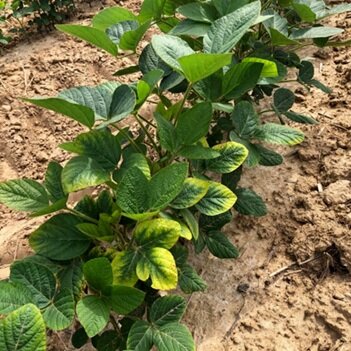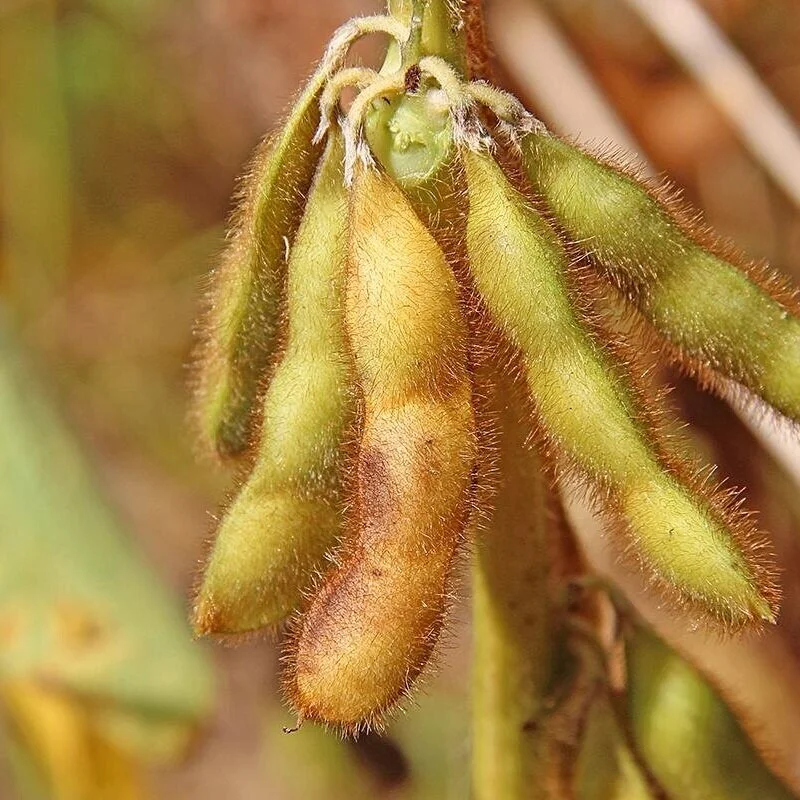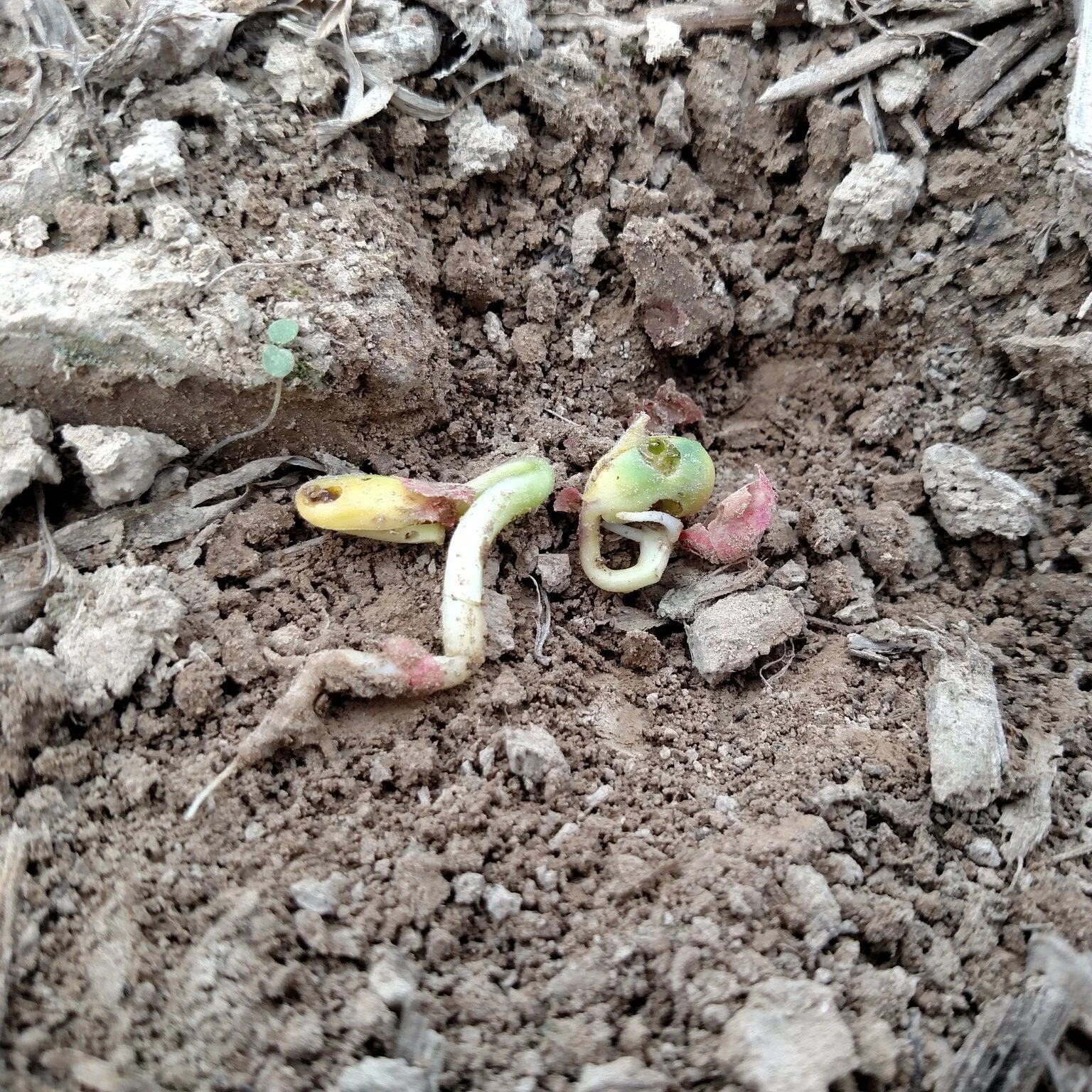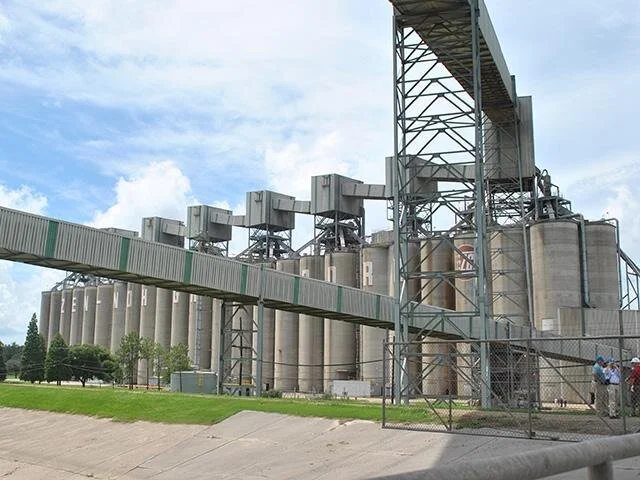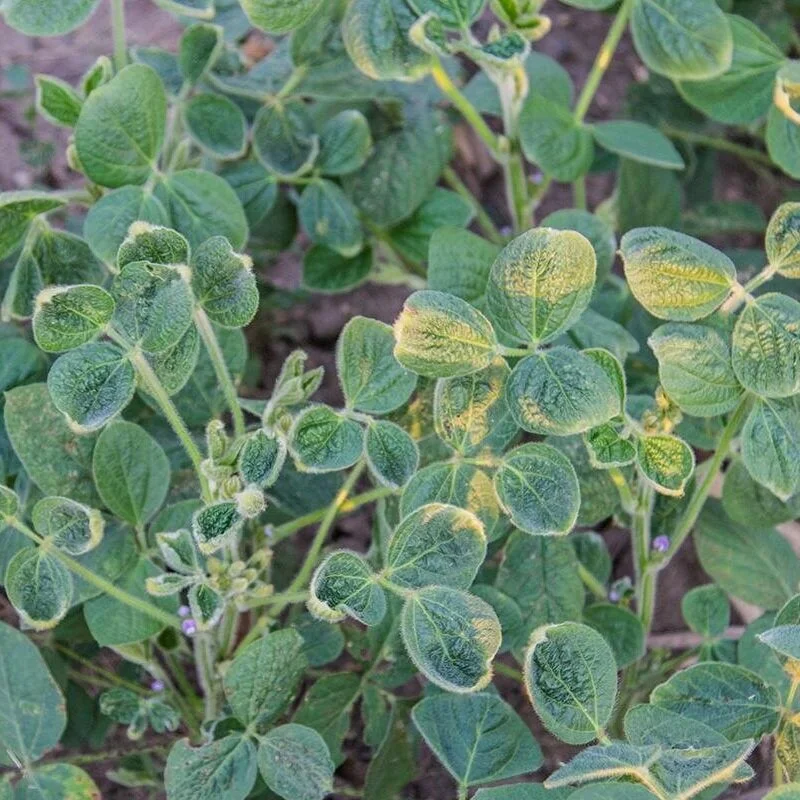The 78 farmer-leaders of the United Soybean Board (USB) approved new projects designed to drive innovation, increase value and create additional demand for U.S. soybeans — ultimately increasing profitability for U.S. soybean farmers. During the organization’s summer board meeting, July 14-15 in St. Charles, Missouri, leaders approved 181 new checkoff-funded projects, with a total budget allocation of $78M, for the 2022 fiscal year, starting October 1, 2021.
Read MoreEven though wet weather this spring and early summer played havoc with the Louisiana soybean crop, it’s now all planted.
LSU AgCenter Soybean Specialist Dr. David Mosely says the wet weather early was really a problem.
“Some areas have started irrigating. However, the biggest problem our producers have faced so far is heavy and continuous rain since the beginning (of the season.”
Heavy thunderstorms moved through southern Arkansas and north Louisiana June 10th and flooded quite a lot of acres.
“On the north end of Louisiana it’s been estimated about 9000 to 10,000 acres were flooded but some growers were able to replant. And in the south, in the sugarcane areas, they had continuous rain as well since the beginning of the season,” said Mosely.
“Those soybean crops are at about the R5 growth stage, so they’re progressing pretty well, but they continue to struggle with all the rainfall.”
Read MoreFor years, sustainability was not much more than a buzzword in agricultural circles. The term was difficult to define, and most farmers couldn’t figure out how to make the concept work financially for themselves.
That view is changing because more growers are thinking it’s the right thing to do and because the economics are beginning to line up, according to Abby Rinne, director of sustainability for the U.S. Soybean Export Council.
Read MoreAlmost half a billion dollars is buried at the bottom of the Mississippi River, and the U.S. soybean industry is confident the vast sum is waiting at a depth of 50’. A massive effort is underway to dredge the lower Mississippi along its final 250-mile stretch, and the results could provide major financial benefits to American farmers.
At ports along the mouth of the Mississippi, most ships loading soybeans can presently carry a maximum of 2.4 million bushels, and any additional weight in the hold puts the vessels in danger of scraping the riverbed. However, a mere extra 5’ in depth allows a ship to squeeze in 2.9 million bushels, and gain greater carrying power, at a marginal increase in transport costs to the vessel. Translation: Digging the depth of the lower Mississippi from 45’ to 50’ could generate an extra $461 million annually for the U.S. soybean industry—independent of supply and demand, and strictly based on efficiency of transport.
Read MoreAs farmers prepare for a critical stage in their crop's development when disease and pest pressure can threaten yield and profitability, the soy checkoff and its partners in the Take Action program present Pest Elimination Strategies and Tactics (PEST) Week, June 28 to July 2. This weeklong event focuses on the small steps farmers can take to mitigate pesticide resistance in real time during the growing season. Each year, PEST Week reminds farmers about the timely in-season information and resources available to them through the Take Action program to help manage pests, mitigate resistance and protect against crop loss.
Read MoreThe American Soybean Association (ASA) and Corteva Agriscience are seeking applicants for the 2021-22 ASA Corteva Young Leader Program.
The Young Leader Program, sponsored by Corteva Agriscience and ASA, is a two-phase educational program for actively farming individuals and couples who are passionate about the future possibilities of agriculture. The women and men who participate in this program will be the leaders that shape the future of agriculture.
Read MoreThe American Soybean Association (ASA) is once again celebrating exceptional soy volunteers and leaders—and we need your help with nominations! During ASA’s annual awards banquet, individuals will be honored for state association volunteerism, distinguished leadership achievements and long-term, significant contributions to the soybean industry. The nomination period is open through Oct. 25, 2021.
Read MoreThe progress of 2021 soybean planting season has been behind the five-year average from the beginning due to weekly heavy rains throughout the state. The optimum soybean planting window is suggested to be from mid-April to mid-May. According to the USDA-NASS report, 45% of the crop was planted by May 16, compared to the five-year average of 77%. During the three weeks from May 16 to June 6, soybean producers were able to plant an additional 41% of the projected acres, slightly past the optimum window. Soybean planting date research has indicated yield potential will decrease when planting late. However, the final yield from previous years with comparable slow planting progress indicate good soybean yield is still achievable this year. The planting progress in 2013 and 2019 was comparable to this year. The yields were 48.5 and 48 bushels per acre in 2013 and 2019, respectively: approximately 95% of the average yield from 2016-2020 (51 bushels per acre).
Read MoreA non-GMO soybean variety containing high oleic trait technology, SOYLEIC, is building demand thanks to funding and partnership support from the Missouri Soybean Merchandising Council and the soy checkoff. The variety offers opportunities for farmers to meet end-user high oleic oil needs for specific markets.
High oleic soybean oil provides increased functionality and contains zero trans-fat. It is an ideal oil for frying, baking and many other uses in restaurants and home kitchens. It creates nutritious food for humans and feed for animal diets while offering a diversified and value-added planting option for soy farmers.
Read MoreLSU AgCenter Soybean Specialist Dr. David Mosely reports planting progress has been slow since the start of the season this year.
“We started off wet,” says Mosely, “mostly from the winter storms in February. We probably had some left over moisture from those storms, but they prevented producers from getting out and doing some field preparations.”
Heavy, persistent rainfall started up in March across Louisiana “and that hasn’t really stopped. We’re still seeing a pattern of persistent rain and really most of the state stayed wet.”
“We might have had a couple of dry days but before we cold get planted, we would have another heavy rain. And that pattern has pretty much lasted the entire planting season.”
(This report a service of the Louisiana Soybean, Grain Research and Promotion Board)
Read MoreThe U.S. Justice Department intervened in a large sale of grain elevators from one company to another, citing concerns about the impact on cash grain market competition.
Zen-Noh Grain Corp, a subsidiary of the National Federation of Agricultural Cooperative Associations of Japan, reached a $300 million deal to buy 35 operating and 13 idled grain elevators from Bunge North America last April.
Read MoreSoybeans prices are selling at highs in Brazil because of strong internal and external demand, rising prices on the Chicago Mercantile Exchange, and a weak Brazilian real couple with a strengthening U.S. dollar. Prices have risen at the same time that Brazil, the world’s largest soybean producer, has achieved a new record harvest. The 2020/2021 forecast indicates Brazil will harvest 4.97 billion bushels, 8.5% more soybeans than last season. In addition, Brazil´s soybean exports increased dramatically in the last months, reaching historic highs, including unusual sales to the United States.
Read MoreSouthwest Louisiana crops have been impacted by the recreant heavy rainfall and flooding.
Many crop fields in Calcasieu were submerged in the flood. Though all plants need water to grow, experts said crops in this region do better when it’s hot and dry.
Read MoreMay 28 is the last day to file a claim in the dicamba soybean settlement. Producers with evidence of dicamba damage in soybeans occurring from 2015 through 2020 are eligible to file a claim. The courts have set aside $300 million for soybean producers who experienced damage and $100 million for administrative costs.
Read MoreOver the past several years, Indian organic meal has flooded the U.S. market, jumping from just 2% before the surge to now owning nearly 70% of the U.S. organic meal market. U.S.-produced organic soybean meal meanwhile has plummeted from 80% of the market to just over 30%.
The United States International Trade Commission (USITC) determined that there is a reasonable indication that a U.S. industry is materially injured by reason of imports of organic soybean meal from India that are allegedly subsidized and sold in the United States at less than fair value.
Read More

